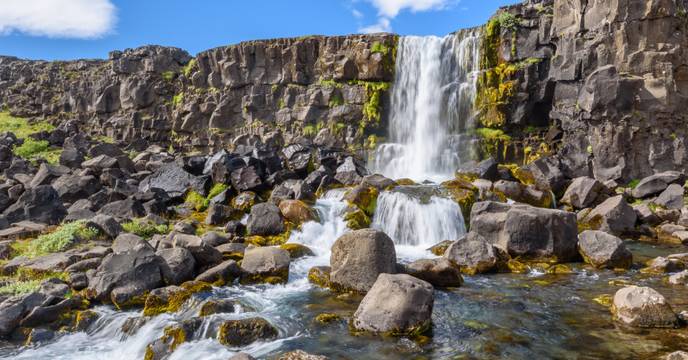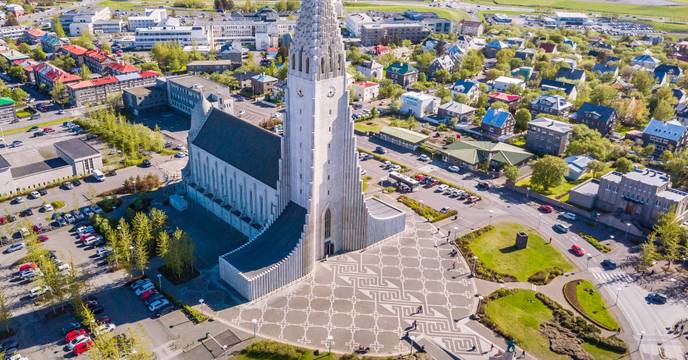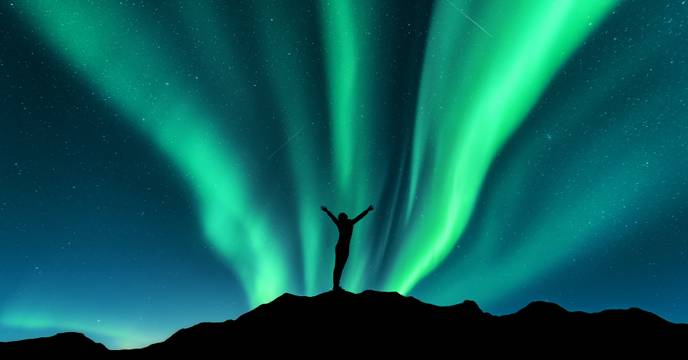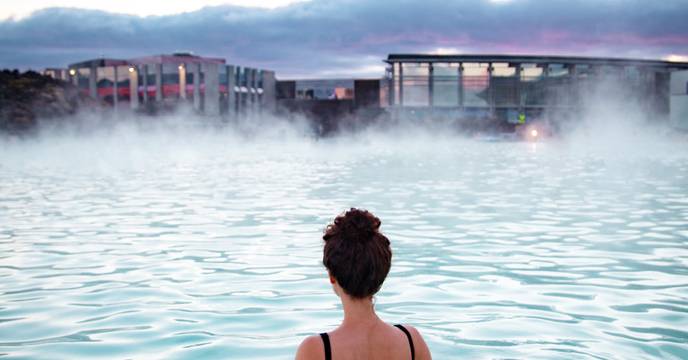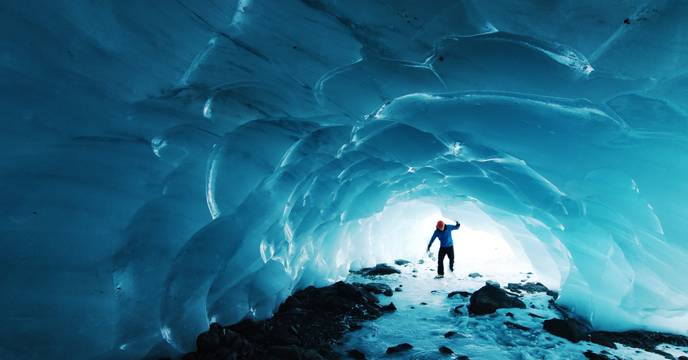
Best Time to Visit Iceland
Table of contents
Summer
Spring & autumn/fall
Winter
Monthly activities and tourists in Iceland
Seasonal guide to prices in Iceland
Travel companies in Iceland
FAQ
Visit Iceland, the land of fire and ice, where the adventure of a lifetime awaits, regardless of the season. But when is the best time to visit Iceland? Whether you want to witness the northern lights in winter or hike under the midnight sun in the summer, Iceland guarantees a fantastic adventure.
Book your Iceland tour on TourRadar and discover otherworldy wonders. An unforgettable adventure awaits!
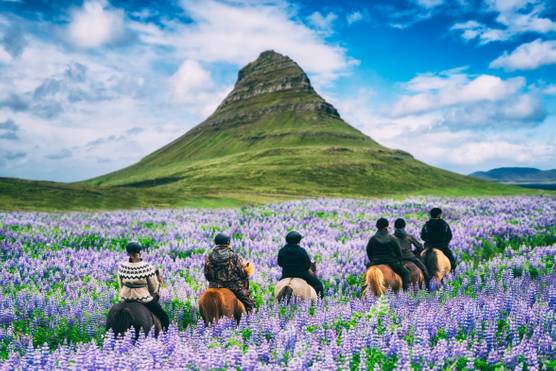
Best time to visit Iceland: Summer
Summer offers the warmest weather, ideal for exploring Iceland's highlands and remote fjords.
Summer is a fantastic time to visit because:
Midnight sun: Experience nearly 24 hours of sunlight, providing more time for adventures
Warmer weather: Enjoy the outdoors comfortably with milder temperatures
Accessibility: All regions, including the highlands, are accessible.
Vibrant wildlife: See puffins and whales in their natural habitat.
Cultural festivals: Attend traditional Icelandic celebrations and music festivals.
Lush landscapes: Witness Iceland's nature in full glory, from waterfalls to moss-covered lava fields.
Top things to do and see in Iceland in summer
Three essentials to pack for your Iceland tour in summer
Swimsuit
For dips in geothermal pools and hot springs.
Camera
Capture your unique travel moments and the midnight sun.
Wind-proof clothing
For the fluctuating summer temperatures and sudden showers.
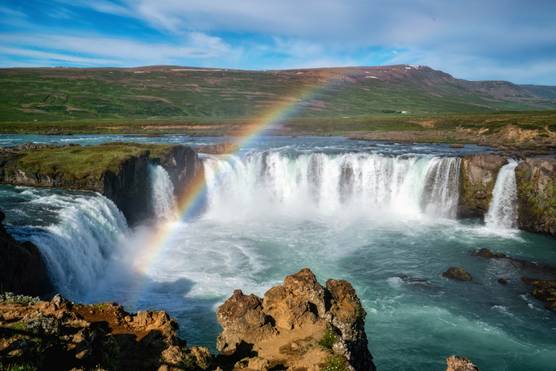
Best time to visit Iceland: Spring and autumn/fall
Visit Iceland in spring or fall because:
Milder crowds: Enjoy Iceland's attractions with fewer tourists and a more personal experience.
Northern Lights: Autumn offers a chance to witness the northern lights with darker, clearer nights.
Economic travel: Benefit from off-peak pricing on flights, accommodations, and tours.
Seasonal colors: Witness the dramatic change in landscapes, from blooming spring to autumn foliage.
Wildlife: Spring is perfect for bird watching, including puffins, as they return to nest.
Weather: Explore Iceland in less severe conditions than the deep winter, making outdoor adventures more accessible.
Top things to do and see in Iceland in spring and autumn/fall
Three essentials to pack for your Iceland tour in winter
Waterproof gear
Essential for unpredictable showers, especially waterproof jackets and pants.
Sturdy hiking boots
Essential for exploring Iceland’s rugged terrain.
Swimsuit
To relax in geothermal pools and hot springs.
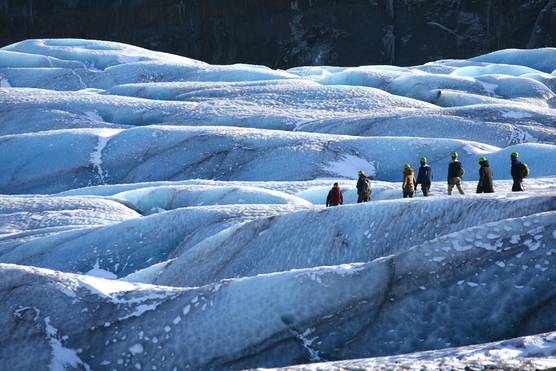
Iceland in winter
Overview of activities and tourists in Iceland per month
Iceland offers an adventurous year-round playground for those who embrace its unpredictable weather.
Summer (June to August) boasts endless opportunities for hiking, wildlife watching, and experiencing the midnight sun, making it the best time to visit Iceland for those seeking full access to its natural splendors.
Autumn (September to October) and spring (April to May) serve as shoulder seasons, offering a quieter yet equally captivating experience with the northern lights and blooming landscapes, respectively.
Winter (November to March) calls to the brave, where snowed landscapes and the northern lights create a magical yet chilly adventure.
| Month | Popular Activities | Tourist Volume | Season |
|---|---|---|---|
| January | Northern lights, ice cave & glacier tours, winter sports |
Low
| Low season |
| February | Northern lights, snowmobiling on glaciers, hot springs |
Low
| Low season |
| March | Northern lights, ice fishing, winter sports, hot springs |
Moderate
| Low season |
| April | Northern lights, whale & bird watching hiking, horse riding |
Moderate
| Low season |
| May | Whale & puffin watching, hiking, exploring waterfalls, horse riding |
Moderate
| Shoulder season |
| June | Midnights sun, whale & puffin watching, river rafting, hiking, fishing |
High
| Peak season |
| July | Whale & puffin watching, diving in Silfra, festivals, exploring the highlands |
High
| Peak season |
| August | Whale & puffin watching, diving in Silfra, exploring the highlands |
High
| Peak season |
| September | Whale watching, northern lights, diving in Silfra, exploring the highlands |
Moderate
| Shoulder season |
| October | Northern lights, exploring lava caves & glaciers, hot springs, seal watching |
Low
| Shoulder season |
| November | Northern lights, exploring lava & glacier caves, winter sports, hot springs |
Low
| Low season |
| December | Northern lights, Christmas markets, winter sports, hot springs |
Moderate
| Low season |
Iceland adventures
The best time to visit Iceland: A seasonal guide to prices
When to travel to Iceland depends on what you want to experience and your budget, as traveling in Iceland sees notable fluctuations in prices across different seasons. During peak summer (June to August), expect higher prices for accommodations, car rentals, and tours as demand surges due to the midnight sun and milder weather. Shoulder seasons (May and September to mid-October) offer a sweet spot with slightly reduced costs and fewer crowds, while still providing good weather and decent daylight. The low season in winter (November to April) generally offers great deals. Prices for hotels and excursions drop significantly, making it an attractive time for budget-conscious travelers wanting to experience the northern lights.
Peak Season (June to August):
- Highest prices due to demand
- Costlier accommodations and tours
- Increased car rental rates
Shoulder Season (May, September to October):
- Moderately reduced prices
- Balance of affordability and good weather
- Less crowded, offering better deals
Low Season (November to April):
- Lowest prices of the year
- Significant discounts on hotels and excursions
- Ideal for budget-conscious travelers and northern lights seekers
Top-rated operators for Iceland tours
What people ask about Iceland
What’s the best time to see the northern lights in Iceland?
The prime time is from late September to early April when nights are the longest. Tours during these months maximize your chances of witnessing the northern lights.
When is the ideal time for hiking in Iceland?
Summer, particularly July and August, offers ideal conditions for hiking, with accessible trails, warmer weather, and the midnight sun bringing almost 24 hours of daylight.
Can I visit the Icelandic highlands in winter?
The highlands are generally inaccessible from late autumn to early spring due to snow and road closures. Summer is the best time for exploring the highlands.
What’s the best season to avoid crowds in Iceland?
The shoulder seasons of April to May and September to October offer a sweet spot with fewer tourists, milder weather, and lower prices.
Is summer the most expensive time to visit Iceland?
Yes, summer sees peak prices for flights, accommodations, and tours due to high demand and optimal weather conditions.
How early should I book my Iceland tour for the high season?
It’s advisable to book several months in advance, especially for the summer months, to ensure availability and secure the best rates.
24/7 Customer Support
Our team of experienced tour specialists have traveled to hundreds of countries around the globe and have decades of first-hand travel experience to share. Contact us now to have all of your tour-related questions answered!
More about Iceland
- Western Europe (9601)
- Nordic / Scandinavia (1019)
- Family (330)
- Fully Guided (270)
- August 2025 (240)
- September 2025 (238)
- Reykjavik (229)
- July 2025 (223)
- June 2025 (221)
- South Iceland (204)
- April 2025 (201)
- May 2025 (193)
- October 2025 (177)
- 7 Day (159)
- November 2025 (143)
- March 2025 (139)
- December 2025 (131)
- 10 Day (130)
- February 2026 (125)
- January 2026 (124)
- Iceland South Coast (123)
- Private (120)
- Christmas & New Year (93)
- Self Drive (70)
- Northern Lights (66)
- Coach / Bus (63)
- 2 Week (40)
- Hiking & Trekking (33)
- 3 Day (26)
- Active (22)
- Reykjanes (15)
- Camping (10)
- Arctic (10)
- Iceland and Norway (7)
- Ocean Cruise (6)
- Polar (6)
- Wildlife (6)


